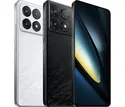小米 Poco F7 Pro 的评价
小米 Poco F7 Pro 的价格比许多旗舰智能手机低得多,但在许多方面的功能却不相上下。首先是它的 SoC 性能,其真彩色和超亮 AMOLED 屏幕也给我们留下了深刻印象。此外,它的电池续航时间长,充电时间短,手机的 5000 万像素摄像头能拍出清晰的照片,支持当前的无线标准,并保证更新至 2031 年,因此从长远来看,Poco F7 Pro 也值得购买。
当然,与顶级智能手机的差距依然存在。它没有无线充电功能,不支持 eSIM 卡,摄像头只能进行数字变焦。
Pros
Cons
价格和供应情况
在撰写本文时,您可以从亚马逊以 679.99 美元的价格订购 Poco F7 Pro(512 GB)。
Table of Contents
- 小米 Poco F7 Pro 的评价
- 规格
- 外壳 - 配有大猩猩 7i 玻璃的 Poco F7 Pro
- 连接性 - 红外遥控器、12 GB 内存和高达 512 GB 的存储空间
- 软件 -Android 15 和 2031 年之前的更新
- 通信和全球导航卫星系统 - 配备 WiFi 7,但没有 6 GHz 频段
- 电话功能和通话质量 - 双 SIM 卡,不支持 eSIM 卡
- 摄像头 - 双摄像头,分辨率为 50 万像素,配备 OIS
- 配件和保修 - 可选 2 年设备保险
- 输入设备和操作 - 高速系统
- 显示屏 - AMOLED 屏幕,亮度高达 3000 cd/m²
- 性能 - 搭载骁龙 8 代 3 处理器的 Poco F7 Pro
- 排放 - 负载时发热,日常使用时冷却
- 电池寿命 - 6000 毫安时电池可持续使用很长时间
- Notebookcheck 总评分
- Possible alternatives compared
小米发布了 Poco F7 Pro,据称这是一款全新的 "杀手级旗舰"。这款装备精良的 6.67 英寸智能手机配备了 120 Hz AMOLED 屏幕,并搭载了速度极快的 骁龙 8 代 3.它还配备了防水外壳、6000 毫安时电池、90 瓦充电和分辨率为 5000 万像素的双摄像头。
在这篇评测中,我们将了解 Poco F7 Pro 是否真的是一款旗舰替代产品,以及它在与同价位中端智能手机的对比中表现如何。
规格
» Notebookcheck多媒体笔记本电脑Top 10排名
» Notebookcheck游戏笔记本电脑Top 10排名
» Notebookcheck低价办公/商务笔记本电脑Top 10排名
» Notebookcheck高端办公/商务笔记本电脑Top 10排名
» Notebookcheck工作站笔记本电脑Top 10排名
» Notebookcheck亚笔记本电脑Top 10排名
» Notebookcheck超级本产品Top 10排名
» Notebookcheck变形本产品Top 10排名
» Notebookcheck平板电脑Top 10排名
» Notebookcheck智能手机Top 10排名
» Notebookcheck评测过最出色的笔记本电脑屏幕
» Notebookcheck售价500欧元以下笔记本电脑Top 10排名
» Notebookcheck售价300欧元以下笔记本电脑Top 10排名
外壳 - 配有大猩猩 7i 玻璃的 Poco F7 Pro
小米将 Poco F7 Pro 装入金属边框中,两侧使用大猩猩 7i 玻璃进行保护。遗憾的是,指纹很快就会积聚在后盖上的摄像头模块区域。另一方面,AMOLED 面板的边框非常纤薄,206 克的重量让做工精良的 Poco F7 Pro 拿起来非常舒适。其外壳符合 IP68 防尘防水标准。
小米提供三种颜色的智能手机。除了我们测试设备的黑色配色外,还有蓝色和银色。
连接性 - 红外遥控器、12 GB 内存和高达 512 GB 的存储空间
Poco F7 Pro 的最小存储版本为 256 GB,价格约为 680 美元;如果您选择 512 GB 版本,价格约为 730 美元。除了红外触发器、立体声扬声器和双卡双待功能外,您还将获得一个使用 USB 2.0 的 USB-C 端口。在我们使用外置固态硬盘三星便携式固态硬盘 T7 进行的复制测试中,它的速度只有 20.2 MB/s,即使按照 USB 2.0 的标准来看也是很慢的。
软件 -Android 15 和 2031 年之前的更新
可持续性
关于智能手机中使用的可回收材料的比例,小米公司尚未提供任何确切信息。不过,据该制造商称,其智能手机部件中的再生铝、金和铜的用量有所增加。小米的目标是到 2025 年,从废弃产品中回收 38,000 吨电子垃圾。目前,这一目标已经实现了 44%。
通信和全球导航卫星系统 - 配备 WiFi 7,但没有 6 GHz 频段
Poco F7 Pro 支持多个 5G 频段,因此在移动中不会出现任何接收问题。在短距离内,小米智能手机可通过蓝牙 5.4、NFC 和 WiFi 7 进行通信,但后者不支持 6 GHz 频段。在我们的测试中,小米智能手机在 5 GHz 频段内实现了基本稳定的 Wi-Fi 传输速率,峰值达到 988 MBit/s。
电话功能和通话质量 - 双 SIM 卡,不支持 eSIM 卡
Poco F7 Pro 有一个双 SIM 卡插槽,但不能激活 eSIM 卡。除了 VoLTE 外,它还支持 Wi-Fi 通话。
在我们的测试中,这款小米智能手机提供了良好的通话质量。即使使用免提模式,声音也能清晰地传输,其噪音抑制功能也能可靠地工作。
摄像头 - 双摄像头,分辨率为 50 万像素,配备 OIS
Poco F7 Pro 的自拍摄像头分辨率为 2000 万像素。它没有自动对焦功能,但能拍摄出不错的照片,并能以每秒 60 帧的速度录制最高 1080p 的视频。
该手机的 5000 万像素主摄像头在日光下也能为摄影师带来不错的拍摄效果。照片的细节略有欠缺,但色彩描绘自然,即使放大 5 倍也很清晰。即使在黑暗环境中,主摄像头也能捕捉到充足的光线。遗憾的是,该设备的超广角摄像头受到 800 万像素分辨率的限制,但仍能提供不错的拍摄质量。
主摄像头可录制稳定度良好的视频,最高可达每秒 24 帧的 8K(每秒 60 帧的 4K)。在视频录制过程中,您可以在主摄像头和超广角摄像头之间切换,最高分辨率可达 1080p,每秒 30 帧。
Image Comparison
Choose a scene and navigate within the first image. One click changes the position on touchscreens. One click on the zoomed-in image opens the original in a new window. The first image shows the scaled photograph of the test device.
Daylight photoDaylight photoUltra-wide angle5x zoomLow-light photo

配件和保修 - 可选 2 年设备保险
Poco F7 Pro 随附保护盖、USB 数据线、SIM 卡工具和快速入门指南。开箱即可使用屏幕保护膜。
小米手机的保修期为 12 个月,可通过 "小米关怀 "延长保修期。"小米关怀 "是一项为期 2 年的意外损坏和盗窃保险。附加费约为 67 美元(仅意外损坏)或 90 美元(意外损坏和盗窃)。
输入设备和操作 - 高速系统
在日常使用中,Poco F7 Pro 的系统速度非常快。支持 骁龙 8 代 3和 12GB RAM 的支持下,它处理输入的速度非常快。虽然从屏幕边缘向中间滑动时,屏幕保护膜会稍显明显,但它的边缘并不锋利。
线性振动电机能提供精确的反馈,位于显示屏下方的超声波指纹传感器能可靠地解锁智能手机。如果环境光线充足,使用自拍摄像头进行 2D 面部识别的效果也很好。
显示屏 - AMOLED 屏幕,亮度高达 3000 cd/m²
| |||||||||||||||||||||||||
Brightness Distribution: 94 %
Center on Battery: 1801 cd/m²
Contrast: ∞:1 (Black: 0 cd/m²)
ΔE Color 0.8 | 0.5-29.43 Ø4.86
ΔE Greyscale 1.3 | 0.5-98 Ø5.1
99.4% sRGB (Calman 2D)
Gamma: 2.24
| Xiaomi Poco F7 Pro AMOLED, 3200x1440, 6.7" | Google Pixel 9 OLED, 2424x1080, 6.3" | Motorola Edge 50 Ultra P-OLED, 2712x1220, 6.7" | Samsung Galaxy S25 AMOLED, 2340x1080, 6.2" | Xiaomi Poco F6 Pro AMOLED, 3200x1440, 6.7" | |
|---|---|---|---|---|---|
| Screen | 1% | 5% | -93% | -47% | |
| Brightness middle | 1801 | 2063 15% | 1326 -26% | 1301 -28% | 1025 -43% |
| Brightness | 1806 | 1914 6% | 1312 -27% | 1311 -27% | 1021 -43% |
| Brightness Distribution | 94 | 84 -11% | 90 -4% | 98 4% | 98 4% |
| Black Level * | |||||
| Colorchecker dE 2000 * | 0.8 | 0.7 12% | 0.51 36% | 3.1 -288% | 1.2 -50% |
| Colorchecker dE 2000 max. * | 1.8 | 2.2 -22% | 1.85 -3% | 4.4 -144% | 3 -67% |
| Greyscale dE 2000 * | 1.3 | 1.2 8% | 0.6 54% | 2.3 -77% | 2.4 -85% |
| Gamma | 2.24 98% | 2.23 99% | 2.191 100% | 2.01 109% | 2.21 100% |
| CCT | 6620 98% | 6524 100% | 1355 480% | 6454 101% | 6656 98% |
* ... smaller is better
Screen Flickering / PWM (Pulse-Width Modulation)
| Screen flickering / PWM detected | 120 Hz Amplitude: 13.7 % Secondary Frequency: 1041 Hz | ||
The display backlight flickers at 120 Hz (worst case, e.g., utilizing PWM) . The frequency of 120 Hz is very low, so the flickering may cause eyestrain and headaches after extended use. In comparison: 53 % of all tested devices do not use PWM to dim the display. If PWM was detected, an average of 8485 (minimum: 5 - maximum: 343500) Hz was measured. | |||
固定缩放级别和不同亮度设置下的测量系列(最低亮度下的振幅曲线看起来很平,但这是缩放造成的。信息框显示的是最小亮度下的振幅放大图)。
Display Response Times
| ↔ Response Time Black to White | ||
|---|---|---|
| 1.11 ms ... rise ↗ and fall ↘ combined | ↗ 0.562 ms rise | |
| ↘ 0.5475 ms fall | ||
| The screen shows very fast response rates in our tests and should be very well suited for fast-paced gaming. In comparison, all tested devices range from 0.1 (minimum) to 240 (maximum) ms. » 3 % of all devices are better. This means that the measured response time is better than the average of all tested devices (20.7 ms). | ||
| ↔ Response Time 50% Grey to 80% Grey | ||
| 1.05 ms ... rise ↗ and fall ↘ combined | ↗ 0.535 ms rise | |
| ↘ 0.5115 ms fall | ||
| The screen shows very fast response rates in our tests and should be very well suited for fast-paced gaming. In comparison, all tested devices range from 0.165 (minimum) to 636 (maximum) ms. » 3 % of all devices are better. This means that the measured response time is better than the average of all tested devices (32.5 ms). | ||
性能 - 搭载骁龙 8 代 3 处理器的 Poco F7 Pro
Poco F7 Pro 使用 骁龙 8 代 3,使其成为同价位中速度最快的智能手机之一。它采用了与现在价格相近的 三星Galaxy S25的 骁龙 8 精英版Galaxy才能在我们的测试中击败小米智能手机。
| UL Procyon AI Inference for Android - Overall Score NNAPI | |
| Google Pixel 9 | |
| Samsung Galaxy S25 | |
| Average of class Smartphone (1267 - 81594, n=153, last 2 years) | |
| Xiaomi Poco F7 Pro | |
| Average Qualcomm Snapdragon 8 Gen 3 (11487 - 18370, n=19) | |
| Xiaomi Poco F6 Pro | |
| Motorola Edge 50 Ultra | |
| Geekbench AI | |
| Single Precision TensorFlow NNAPI 1.2 | |
| Samsung Galaxy S25 | |
| Average of class Smartphone (51 - 1501, n=39, last 2 years) | |
| Xiaomi Poco F7 Pro | |
| Average Qualcomm Snapdragon 8 Gen 3 (235 - 491, n=6) | |
| Half Precision TensorFlow NNAPI 1.2 | |
| Average of class Smartphone (51 - 9453, n=38, last 2 years) | |
| Samsung Galaxy S25 | |
| Xiaomi Poco F7 Pro | |
| Average Qualcomm Snapdragon 8 Gen 3 (219 - 492, n=6) | |
| Quantized TensorFlow NNAPI 1.2 | |
| Average of class Smartphone (123 - 13084, n=38, last 2 years) | |
| Samsung Galaxy S25 | |
| Xiaomi Poco F7 Pro | |
| Average Qualcomm Snapdragon 8 Gen 3 (483 - 1126, n=6) | |
| AI Benchmark - Score V6 | |
| Samsung Galaxy S25 | |
| Xiaomi Poco F7 Pro | |
| Average Qualcomm Snapdragon 8 Gen 3 (5170 - 9552, n=4) | |
| Average of class Smartphone (68.9 - 12578, n=40, last 2 years) | |
骁龙 8 代 3 骁龙 8 第 3 代使用 Adreno 750作为图形处理器,因此 Poco F7 Pro 在 GPU 基准测试中也取得了非常好的成绩,不过与竞争对手相比,Poco F7 Pro 在 CPU 测试中的领先优势要小一些。
GFXBench (DX / GLBenchmark) 2.7: T-Rex Onscreen | 1920x1080 T-Rex Offscreen
GFXBench 3.0: on screen Manhattan Onscreen OGL | 1920x1080 1080p Manhattan Offscreen
GFXBench 3.1: on screen Manhattan ES 3.1 Onscreen | 1920x1080 Manhattan ES 3.1 Offscreen
GFXBench: on screen Car Chase Onscreen | 1920x1080 Car Chase Offscreen | on screen Aztec Ruins High Tier Onscreen | 2560x1440 Aztec Ruins High Tier Offscreen | on screen Aztec Ruins Normal Tier Onscreen | 1920x1080 Aztec Ruins Normal Tier Offscreen | 3840x2160 4K Aztec Ruins High Tier Offscreen
| 3DMark / Wild Life Extreme Unlimited | |
| Samsung Galaxy S25 | |
| Xiaomi Poco F7 Pro | |
| Motorola Edge 50 Ultra | |
| Xiaomi Poco F6 Pro | |
| Google Pixel 9 | |
| 3DMark / Wild Life Extreme | |
| Samsung Galaxy S25 | |
| Xiaomi Poco F7 Pro | |
| Motorola Edge 50 Ultra | |
| Xiaomi Poco F6 Pro | |
| Google Pixel 9 | |
| 3DMark / Wild Life Unlimited Score | |
| Samsung Galaxy S25 | |
| Xiaomi Poco F7 Pro | |
| Xiaomi Poco F6 Pro | |
| Google Pixel 9 | |
| 3DMark / Solar Bay Score | |
| Samsung Galaxy S25 | |
| Xiaomi Poco F7 Pro | |
| Motorola Edge 50 Ultra | |
| Xiaomi Poco F6 Pro | |
| Google Pixel 9 | |
| 3DMark / Solar Bay Unlimited Score | |
| Samsung Galaxy S25 | |
| Xiaomi Poco F7 Pro | |
| Motorola Edge 50 Ultra | |
| Xiaomi Poco F6 Pro | |
| 3DMark / Steel Nomad Light Unlimited Score | |
| Xiaomi Poco F7 Pro | |
| Motorola Edge 50 Ultra | |
| Google Pixel 9 | |
| Xiaomi Poco F6 Pro | |
| 3DMark / Steel Nomad Light Score | |
| Xiaomi Poco F7 Pro | |
| Google Pixel 9 | |
| Motorola Edge 50 Ultra | |
| Xiaomi Poco F6 Pro | |
| Samsung Galaxy S25 | |
| 3DMark / Sling Shot Extreme (ES 3.1) Unlimited Physics | |
| Xiaomi Poco F6 Pro | |
| Google Pixel 9 | |
| Xiaomi Poco F7 Pro | |
| 3DMark / Sling Shot Extreme (ES 3.1) Unlimited Graphics | |
| Xiaomi Poco F7 Pro | |
| Xiaomi Poco F6 Pro | |
| Google Pixel 9 | |
| 3DMark / Sling Shot Extreme (ES 3.1) Unlimited | |
| Xiaomi Poco F6 Pro | |
| Xiaomi Poco F7 Pro | |
| Google Pixel 9 | |
| GFXBench (DX / GLBenchmark) 2.7 / T-Rex Onscreen | |
| Google Pixel 9 | |
| Samsung Galaxy S25 | |
| Motorola Edge 50 Ultra | |
| Xiaomi Poco F6 Pro | |
| Xiaomi Poco F7 Pro | |
| GFXBench (DX / GLBenchmark) 2.7 / T-Rex Offscreen | |
| Samsung Galaxy S25 | |
| Xiaomi Poco F6 Pro | |
| Xiaomi Poco F7 Pro | |
| Google Pixel 9 | |
| Motorola Edge 50 Ultra | |
| GFXBench 3.0 / Manhattan Onscreen OGL | |
| Google Pixel 9 | |
| Samsung Galaxy S25 | |
| Xiaomi Poco F7 Pro | |
| Xiaomi Poco F6 Pro | |
| Motorola Edge 50 Ultra | |
| GFXBench 3.0 / 1080p Manhattan Offscreen | |
| Samsung Galaxy S25 | |
| Xiaomi Poco F6 Pro | |
| Google Pixel 9 | |
| Xiaomi Poco F7 Pro | |
| Motorola Edge 50 Ultra | |
| GFXBench 3.1 / Manhattan ES 3.1 Onscreen | |
| Samsung Galaxy S25 | |
| Xiaomi Poco F7 Pro | |
| Google Pixel 9 | |
| Xiaomi Poco F6 Pro | |
| Motorola Edge 50 Ultra | |
| GFXBench 3.1 / Manhattan ES 3.1 Offscreen | |
| Samsung Galaxy S25 | |
| Xiaomi Poco F6 Pro | |
| Xiaomi Poco F7 Pro | |
| Google Pixel 9 | |
| Motorola Edge 50 Ultra | |
| GFXBench / Car Chase Onscreen | |
| Samsung Galaxy S25 | |
| Xiaomi Poco F7 Pro | |
| Google Pixel 9 | |
| Xiaomi Poco F6 Pro | |
| Motorola Edge 50 Ultra | |
| GFXBench / Car Chase Offscreen | |
| Samsung Galaxy S25 | |
| Xiaomi Poco F6 Pro | |
| Xiaomi Poco F7 Pro | |
| Google Pixel 9 | |
| Motorola Edge 50 Ultra | |
| GFXBench / Aztec Ruins High Tier Onscreen | |
| Samsung Galaxy S25 | |
| Xiaomi Poco F7 Pro | |
| Google Pixel 9 | |
| Motorola Edge 50 Ultra | |
| Xiaomi Poco F6 Pro | |
| GFXBench / Aztec Ruins High Tier Offscreen | |
| Samsung Galaxy S25 | |
| Xiaomi Poco F6 Pro | |
| Xiaomi Poco F7 Pro | |
| Motorola Edge 50 Ultra | |
| Google Pixel 9 | |
| GFXBench / Aztec Ruins Normal Tier Onscreen | |
| Samsung Galaxy S25 | |
| Xiaomi Poco F7 Pro | |
| Google Pixel 9 | |
| Xiaomi Poco F6 Pro | |
| Motorola Edge 50 Ultra | |
| GFXBench / Aztec Ruins Normal Tier Offscreen | |
| Samsung Galaxy S25 | |
| Xiaomi Poco F6 Pro | |
| Xiaomi Poco F7 Pro | |
| Motorola Edge 50 Ultra | |
| Google Pixel 9 | |
| GFXBench / 4K Aztec Ruins High Tier Offscreen | |
| Samsung Galaxy S25 | |
| Xiaomi Poco F6 Pro | |
| Xiaomi Poco F7 Pro | |
| Motorola Edge 50 Ultra | |
| Google Pixel 9 | |
| Jetstream 2 - 2.0 Total Score | |
| Samsung Galaxy S25 (Chrome 134) | |
| Motorola Edge 50 Ultra (Chrome 126) | |
| Xiaomi Poco F7 Pro (Chrome 135.0.7049.38) | |
| Xiaomi Poco F6 Pro (chrome 127) | |
| Average Qualcomm Snapdragon 8 Gen 3 (64.1 - 241, n=23) | |
| Average of class Smartphone (13.8 - 387, n=172, last 2 years) | |
| Google Pixel 9 (Chrome 129) | |
| Speedometer 2.0 - Result | |
| Samsung Galaxy S25 (Chrome 134) | |
| Xiaomi Poco F7 Pro (Chrome 135.0.7049.38) | |
| Motorola Edge 50 Ultra (Chrome 126) | |
| Average Qualcomm Snapdragon 8 Gen 3 (69.6 - 311, n=18) | |
| Xiaomi Poco F6 Pro (chrome 127) | |
| Google Pixel 9 (Chrome 129) | |
| Average of class Smartphone (15.2 - 569, n=152, last 2 years) | |
| Speedometer 3.0 - Score | |
| Samsung Galaxy S25 (Chrome 134) | |
| Xiaomi Poco F7 Pro (Chrome 135.0.7049.38) | |
| Google Pixel 9 (Chrome 129) | |
| Motorola Edge 50 Ultra (Chrome 126) | |
| Average of class Smartphone (1.03 - 34, n=92, last 2 years) | |
| Average Qualcomm Snapdragon 8 Gen 3 (4.3 - 18.9, n=14) | |
| WebXPRT 4 - Overall | |
| Samsung Galaxy S25 (Chrome 134) | |
| Motorola Edge 50 Ultra (Chrome 126) | |
| Xiaomi Poco F7 Pro (Chrome 135.0.7049.38) | |
| Average Qualcomm Snapdragon 8 Gen 3 (69 - 212, n=19) | |
| Xiaomi Poco F6 Pro (chrome 127) | |
| Average of class Smartphone (22 - 273, n=163, last 2 years) | |
| Google Pixel 9 (Chrome 129) | |
| Octane V2 - Total Score | |
| Samsung Galaxy S25 (Chrome 134) | |
| Xiaomi Poco F7 Pro (Chrome 135.0.7049.38) | |
| Motorola Edge 50 Ultra (Chrome 126) | |
| Google Pixel 9 | |
| Average Qualcomm Snapdragon 8 Gen 3 (25953 - 72665, n=23) | |
| Xiaomi Poco F6 Pro (chrome 127) | |
| Average of class Smartphone (2228 - 100368, n=212, last 2 years) | |
| Mozilla Kraken 1.1 - Total | |
| Average of class Smartphone (277 - 28190, n=172, last 2 years) | |
| Average Qualcomm Snapdragon 8 Gen 3 (510 - 2066, n=21) | |
| Xiaomi Poco F6 Pro (chrome 127) | |
| Google Pixel 9 (Chrome 129) | |
| Motorola Edge 50 Ultra (Chrome 126) | |
| Xiaomi Poco F7 Pro (Chrome 135.0.7049.38) | |
| Samsung Galaxy S25 (Chrome 134) | |
* ... smaller is better
| Xiaomi Poco F7 Pro | Google Pixel 9 | Motorola Edge 50 Ultra | Samsung Galaxy S25 | Xiaomi Poco F6 Pro | Average 512 GB UFS 4.1 Flash | Average of class Smartphone | |
|---|---|---|---|---|---|---|---|
| AndroBench 3-5 | -60% | -4% | -35% | -7% | -5% | -40% | |
| Sequential Read 256KB | 3930.33 | 1584.56 -60% | 3926.6 0% | 3982.43 1% | 3070.33 -22% | 4014 ? 2% | 2040 ? -48% |
| Sequential Write 256KB | 3469.2 | 256.48 -93% | 3558.6 3% | 2256.71 -35% | 2987.47 -14% | 3565 ? 3% | 1655 ? -52% |
| Random Read 4KB | 356.12 | 226.41 -36% | 349.1 -2% | 299.89 -16% | 381.58 7% | 327 ? -8% | 283 ? -21% |
| Random Write 4KB | 521.5 | 266.19 -49% | 430.6 -17% | 51.76 -90% | 520.87 0% | 438 ? -16% | 327 ? -37% |
排放 - 负载时发热,日常使用时冷却
温度
在 "Burnout "基准测试中,Poco F7 Pro 在最大负载下的发热温度高达 44 °C。而在日常使用过程中,其表面温度通常远低于这一温度。即使同时打开许多应用程序,小米智能手机几乎总能给人一种舒适凉爽的手感。
(±) The maximum temperature on the upper side is 43.6 °C / 110 F, compared to the average of 35.1 °C / 95 F, ranging from 21.9 to 63.7 °C for the class Smartphone.
(±) The bottom heats up to a maximum of 44 °C / 111 F, compared to the average of 33.9 °C / 93 F
(+) In idle usage, the average temperature for the upper side is 27.1 °C / 81 F, compared to the device average of 32.8 °C / 91 F.
3DMark Steel Nomad stress test
| 3DMark | |
| Wild Life Stress Test Stability | |
| Google Pixel 9 | |
| Xiaomi Poco F7 Pro | |
| Motorola Edge 50 Ultra | |
| Xiaomi Poco F6 Pro | |
| Samsung Galaxy S25 | |
| Wild Life Extreme Stress Test | |
| Motorola Edge 50 Ultra | |
| Google Pixel 9 | |
| Xiaomi Poco F6 Pro | |
| Xiaomi Poco F7 Pro | |
| Samsung Galaxy S25 | |
| Solar Bay Stress Test Stability | |
| Xiaomi Poco F7 Pro | |
| Xiaomi Poco F6 Pro | |
| Motorola Edge 50 Ultra | |
| Samsung Galaxy S25 | |
| Steel Nomad Light Stress Test Stability | |
| Google Pixel 9 | |
| Xiaomi Poco F7 Pro | |
| Motorola Edge 50 Ultra | |
发言人
Poco F7 Pro 配备立体声扬声器,在中高音范围内提供相当线性的声音,即使在最大音量下也不会失真。外部音频设备可通过 USB-C 和蓝牙 5.4 连接。
Xiaomi Poco F7 Pro audio analysis
(+) | speakers can play relatively loud (90.9 dB)
Bass 100 - 315 Hz
(-) | nearly no bass - on average 24.5% lower than median
(+) | bass is linear (5.4% delta to prev. frequency)
Mids 400 - 2000 Hz
(±) | reduced mids - on average 5.4% lower than median
(+) | mids are linear (4.4% delta to prev. frequency)
Highs 2 - 16 kHz
(+) | balanced highs - only 4.5% away from median
(+) | highs are linear (2.5% delta to prev. frequency)
Overall 100 - 16.000 Hz
(±) | linearity of overall sound is average (16.6% difference to median)
Compared to same class
» 7% of all tested devices in this class were better, 5% similar, 88% worse
» The best had a delta of 12%, average was 36%, worst was 134%
Compared to all devices tested
» 26% of all tested devices were better, 6% similar, 68% worse
» The best had a delta of 4%, average was 24%, worst was 134%
Samsung Galaxy S25 audio analysis
(+) | speakers can play relatively loud (91.7 dB)
Bass 100 - 315 Hz
(-) | nearly no bass - on average 24% lower than median
(+) | bass is linear (3.8% delta to prev. frequency)
Mids 400 - 2000 Hz
(±) | reduced mids - on average 7.1% lower than median
(+) | mids are linear (5.8% delta to prev. frequency)
Highs 2 - 16 kHz
(+) | balanced highs - only 4.1% away from median
(+) | highs are linear (2% delta to prev. frequency)
Overall 100 - 16.000 Hz
(±) | linearity of overall sound is average (17.3% difference to median)
Compared to same class
» 10% of all tested devices in this class were better, 7% similar, 83% worse
» The best had a delta of 12%, average was 36%, worst was 134%
Compared to all devices tested
» 30% of all tested devices were better, 8% similar, 62% worse
» The best had a delta of 4%, average was 24%, worst was 134%
电池寿命 - 6000 毫安时电池可持续使用很长时间
耗电量
Poco F7 Pro 的充电功率为 90 瓦。使用小米公司为本次测试提供的 90 瓦电源适配器,一个完整的充电周期耗时 41 分钟(测量时智能手机处于关机状态,电池电量为 0%)。32 分钟后达到 80% 的电量。
小米智能手机在功耗方面没有明显的特点。
| Off / Standby | |
| Idle | |
| Load |
|
Key:
min: | |
| Xiaomi Poco F7 Pro 6000 mAh | Google Pixel 9 4700 mAh | Motorola Edge 50 Ultra 4500 mAh | Samsung Galaxy S25 4000 mAh | Xiaomi Poco F6 Pro 5000 mAh | Average Qualcomm Snapdragon 8 Gen 3 | Average of class Smartphone | |
|---|---|---|---|---|---|---|---|
| Power Consumption | -10% | 8% | 1% | 5% | -5% | -1% | |
| Idle Minimum * | 0.89 | 0.66 26% | 0.9 -1% | 0.47 47% | 0.79 11% | 0.92 ? -3% | 0.875 ? 2% |
| Idle Average * | 1.13 | 1.49 -32% | 1.2 -6% | 1.04 8% | 1.05 7% | 1.337 ? -18% | 1.441 ? -28% |
| Idle Maximum * | 1.18 | 1.78 -51% | 1.4 -19% | 1.07 9% | 1.13 4% | 1.511 ? -28% | 1.584 ? -34% |
| Load Average * | 8.59 | 7.44 13% | 6.5 24% | 13.33 -55% | 7.88 8% | 8.77 ? -2% | 6.94 ? 19% |
| Load Maximum * | 15.81 | 16.64 -5% | 9.2 42% | 16.38 -4% | 16.48 -4% | 11.5 ? 27% | 10.4 ? 34% |
* ... smaller is better
Power consumption: Geekbench (150 cd/m²)
Power consumption: GFXbench (150 cd/m²)
运行时间
Poco F7 Pro 的电池容量为 6000 毫安时,明显大于同类设备,因此续航时间更长。小米手机的模拟网上冲浪时间长达近 22 小时。其最接近的竞争对手 三星Galaxy S25在 WLAN 测试中仅坚持了 18 个小时。
| Battery Runtime - WiFi v1.3 | |
| Xiaomi Poco F7 Pro | |
| Google Pixel 9 | |
| Motorola Edge 50 Ultra | |
| Samsung Galaxy S25 | |
| Xiaomi Poco F6 Pro | |
Notebookcheck 总评分
在我们的测试中,小米 Poco F7 Pro 以其骁龙 8 代 3、明亮的 AMOLED 屏幕、超长的电池续航时间和更新至 2031 年等亮点证明了它是一款经济实惠的旗舰手机。尽管缺乏无线充电和 eSIM 支持等功能,但这款智能手机的性价比很高。
Xiaomi Poco F7 Pro
- 04/23/2025 v8
Manuel Masiero
Possible alternatives compared
Image | Model / Review | Price | Weight | Drive | Display |
|---|---|---|---|---|---|
| Xiaomi Poco F7 Pro Qualcomm Snapdragon 8 Gen 3 ⎘ Qualcomm Adreno 750 ⎘ 12 GB Memory, 512 GB | Amazon: 1. $8.99 Suttkue for Xiaomi Poco F7 P... 2. $5.08 Aiziki (2 Pack) Designed for... 3. $5.99 Suttkue for Xiaomi 14T Pro/P... List Price: 650 Euro | 206 g | 512 GB UFS 4.1 Flash | 6.67" 3200x1440 526 PPI AMOLED | |
| Google Pixel 9 Google Tensor G4 ⎘ ARM Mali-G715 MP7 ⎘ 12 GB Memory, 128 GB | Amazon: 1. $639.99 Google Pixel 9 - Unlocked An... 2. $999.00 Google Pixel 9 Pro - Unlocke... 3. $19.03 ZAGG Glass Elite Anti-Reflec... List Price: 899€ | 198 g | 128 GB UFS 3.1 Flash | 6.30" 2424x1080 421 PPI OLED | |
| Motorola Edge 50 Ultra Qualcomm Snapdragon 8s Gen 3 ⎘ Qualcomm Adreno 735 ⎘ 16 GB Memory, 1024 GB | Amazon: 1. $8.99 PORRVDP Hydrogel Film Screen... 2. $13.99 Hydrogel Film Screen Protect... 3. $5.99 HinZann Privacy Screen Prote... List Price: 999€ | 197 g | 1 TB UFS 4.0 Flash | 6.70" 2712x1220 444 PPI P-OLED | |
| Samsung Galaxy S25 Qualcomm Snapdragon 8 Elite for Galaxy ⎘ Qualcomm Adreno 830 ⎘ 12 GB Memory, 256 GB | Amazon: 1. $31.96 OtterBox Samsung Galaxy S25+... 2. $7.98 firtstnow 3 Pack Glass Scree... 3. $16.99 Super Fast Charger Type C, 2... List Price: 899€ | 162 g | 256 GB UFS 4.0 Flash | 6.20" 2340x1080 416 PPI AMOLED | |
| Xiaomi Poco F6 Pro Qualcomm Snapdragon 8 Gen 2 ⎘ Qualcomm Adreno 740 ⎘ 16 GB Memory, 1024 GB | List Price: 700€ | 209 g | 1 TB UFS 4.0 Flash | 6.67" 3200x1440 526 PPI AMOLED |
Transparency
The selection of devices to be reviewed is made by our editorial team. The test sample was provided to the author as a loan by the manufacturer or retailer for the purpose of this review. The lender had no influence on this review, nor did the manufacturer receive a copy of this review before publication. There was no obligation to publish this review. We never accept compensation or payment in return for our reviews. As an independent media company, Notebookcheck is not subjected to the authority of manufacturers, retailers or publishers.
This is how Notebookcheck is testing
Every year, Notebookcheck independently reviews hundreds of laptops and smartphones using standardized procedures to ensure that all results are comparable. We have continuously developed our test methods for around 20 years and set industry standards in the process. In our test labs, high-quality measuring equipment is utilized by experienced technicians and editors. These tests involve a multi-stage validation process. Our complex rating system is based on hundreds of well-founded measurements and benchmarks, which maintains objectivity. Further information on our test methods can be found here.




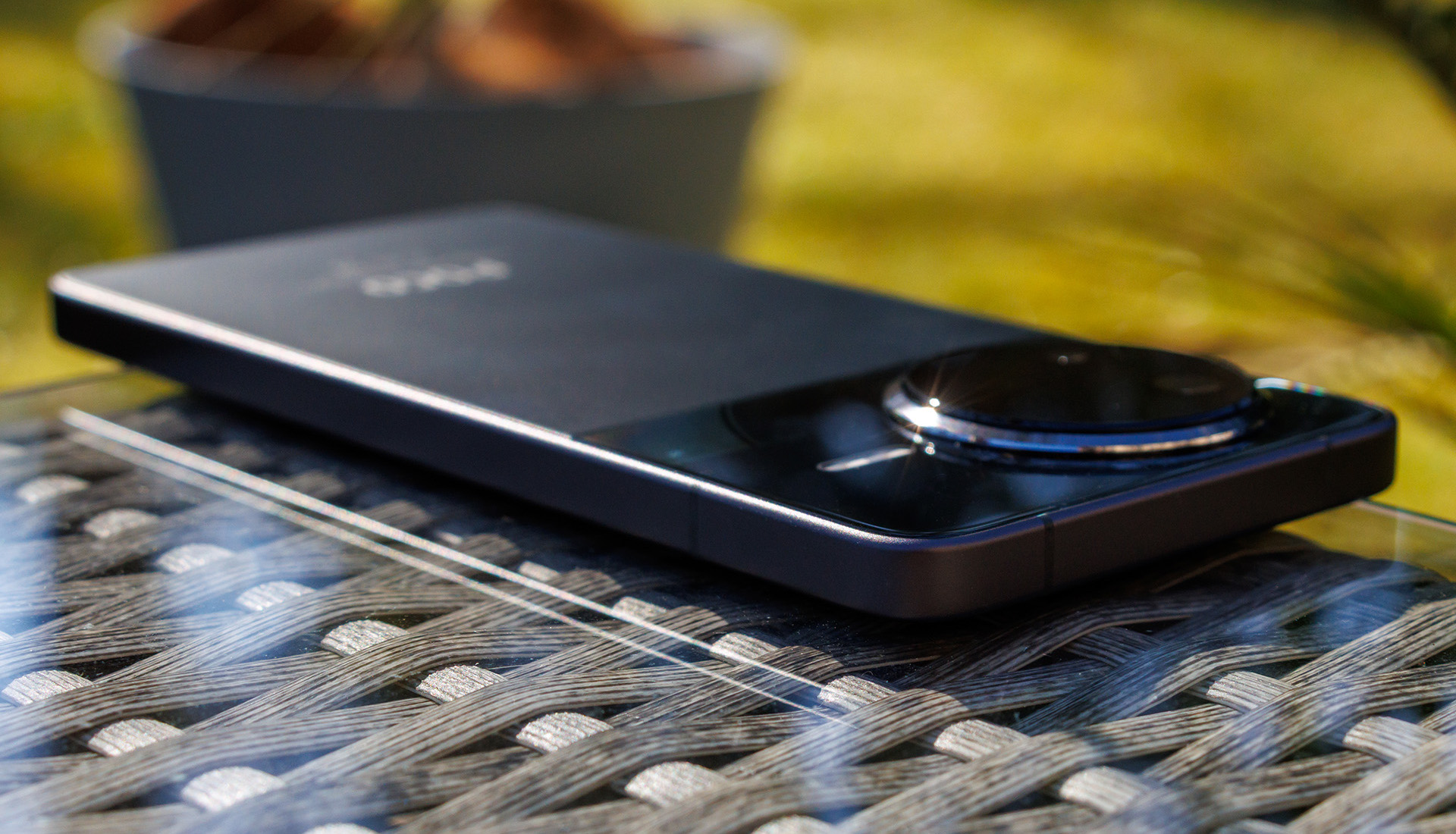




















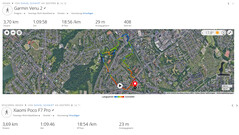










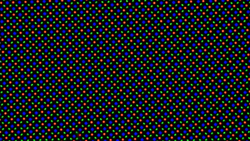
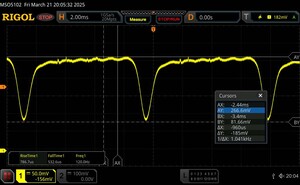








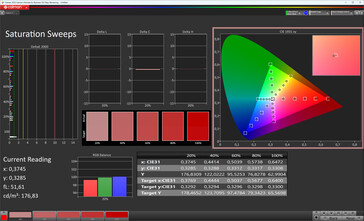

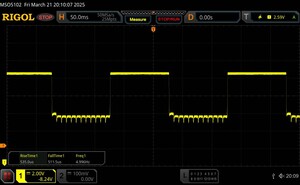

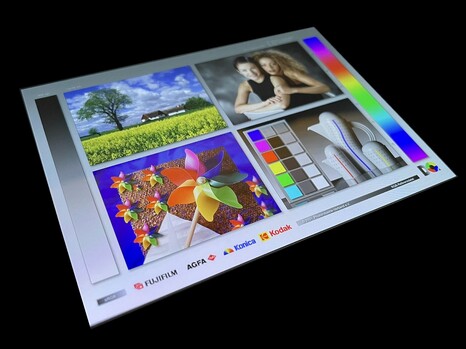
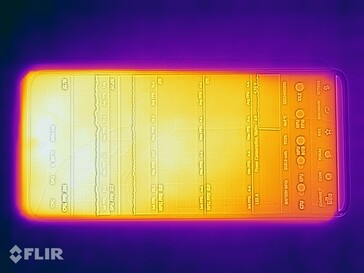
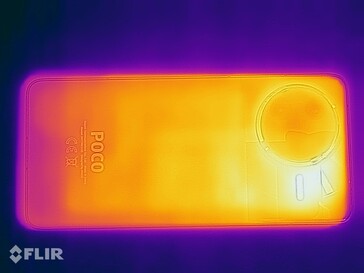
 Total Sustainability Score:
Total Sustainability Score: 


